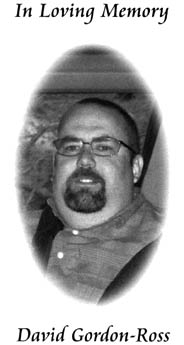
 Carl Jung, the famous Swiss psychologist, wrote: "The meeting of two personalities is like the contact of two chemical substances. If there is any reaction, both are transformed."
Carl Jung, the famous Swiss psychologist, wrote: "The meeting of two personalities is like the contact of two chemical substances. If there is any reaction, both are transformed."
Excerpt from my Homing In column in CQ-VHF Magazine, Summer 2006, titled "Remembering Two T-Hunting Comrades"

 Carl Jung, the famous Swiss psychologist, wrote: "The meeting of two personalities is like the contact of two chemical substances. If there is any reaction, both are transformed."
Carl Jung, the famous Swiss psychologist, wrote: "The meeting of two personalities is like the contact of two chemical substances. If there is any reaction, both are transformed."
Ham radio brings personalities together. On the air, at meetings, flea markets, Field Day and many other events, we become acquainted with people with whom we share an interest in radio communications. Lasting friendships are created and lives are changed.
Nowhere is this more evident than among aficionados of radio direction finding contests, both mobile and on foot. I have often written about the camaraderie that builds among hams as they engage in friendly competition to see who can assemble the most effective radio direction finding (RDF) systems, who has the best "foxhunting" skills, and who can find the cleverest transmitter hiding sites to keep the "hounds" at bay.
Although they always welcome newcomers, the mobile T-hunters of southern California are an unorganized but close-knit community of strong personalities who play hard at their weekend sport. They also work hard when called upon to solve RF interference problems. On Memorial Day weekend, they were hit by the loss of two of their finest. As reported in the Amateur Radio press, Mike Obermeier K6SNE and David Gordon-Ross N6IDF lost their lives when Mike's Jeep went off Cook Peak Road near Lake Isabella in Kern County, California on May 27, 2006. It was the first serious accident in over three decades of mobile transmitter hunts in the Los Angeles area.
Southern California T-hunters were stunned. For weeks, they had seen photos that Mike had e-mailed about the reworking of his Jeep to make it perfect for on-road and off-road use. He could hardly wait to take it out on one of our "All-Day" two-meter hunts, which usually last for a full weekend and involve hundreds of miles of travel to find several well-hidden transmitters in the mountains and deserts. Even though he was a paraplegic, Mike had done his own shop work, mostly by himself.
K6SNE was one of the most active ARRL Official Observers in southern California. Thanks to the efforts of Mike and other T-hunters, there is now an unprecedented level of cooperation between ARRL OOs and the Los Angeles area FCC office in Cerritos. Mike put the finger on numerous repeater jammers and non-identifying troublemakers, including the infamous Jack Gerritsen.
David and Mike were always eager to use their RDF skills to find the sources of spurious signals and malicious interference. The problems did not have to be on a ham band -- I told you about K6SNE's adventure on a banana boat at the Los Angeles harbor in my Homing In column for the Fall 2004 issue. He didn't hesitate to become aggressive when the ship's Russian crew members were indifferent to the likelihood that their radio gear might be making the mariners' international distress and safety channel unusable for many miles.
It takes that sort of perseverance and self-confidence to find well-hidden transmitters in the mountains and deserts of California and western states. N6IDF and K6SNE were fearless, but they weren't foolhardy. Contrary to some uninformed posts on Internet ham radio message boards, they were doing nothing more dangerous than traveling a narrow dirt road. Mike had two decades of experience driving with hand controls, but something went wrong this time.
K6SNE had been active in outdoor sports until an accident put him into a wheelchair on his nineteenth birthday. So it's not surprising that on-foot transmitter hunting appealed to him almost as much as mobile RDF. When international-rules radio-orienteering first came to southern California during the mid 1990s, Mike wanted to join in. That led to a pioneering experiment with the concept of "extenders" for competitors with disabilities at the 1995 ARRL Southwestern Division convention's on-foot hunt.
Nobody had more fun at this convention foxhunt than Mike and the other disabled participant. Neither won a prize, but they successfully found transmitters and received certificates of merit. It was a great example of inclusion and mainstreaming, two buzzwords that are popular with educators nowadays.
 Back to the Homing In home page
Back to the Homing In home page